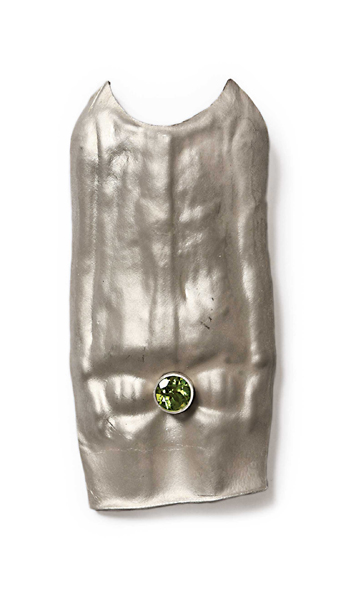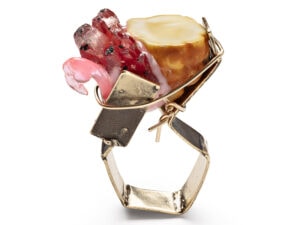We seem to be having a moment when jewelry couples are having exhibitions together. This one, with Georg Dobler and Margit Jäschke, is at Loupe Gallery and is titled Twogether. They both answered questions for me about their work and their lives.

Susan Cummins: How did you two meet, and were you both making jewelry at the time?
Margit Jäschke: We met at a jewelry symposium in 1995 and took to each other at once. We were both very much involved in making jewelry, however, we were also both involved in relationships with other people. As time went on, we would meet as colleagues at various exhibitions. In 2008 we held a joint exhibition, and as luck would have it, we were both living alone at that time. Finally, our timing was perfect!
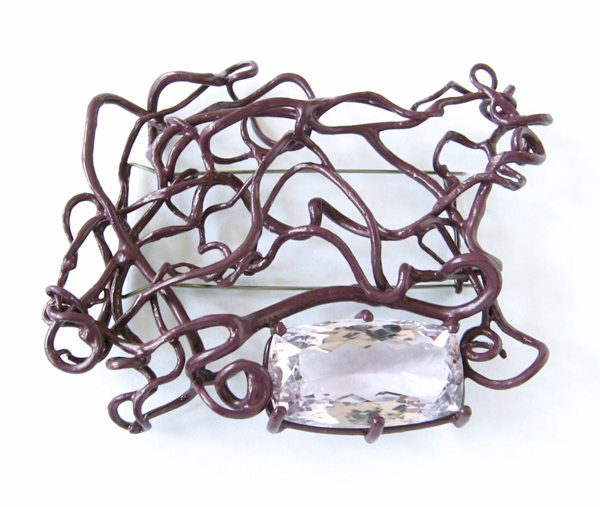
Margit Jäschke: I grew up in Halle, a city in the former GDR under the communist rule. I began my studies in 1983 at the Art University Burg Giebichenstein, Halle, in the GDR and received my diploma in art at the time that the Iron Curtain came down.
Georg Dobler: I was born in a small village near Bayreuth, in western Germany. My family moved to Pforzheim in 1955—the jewelry city with a big jewelry and watch industry. I began my education at a jewelry school in Pforzheim and moved to West Berlin in 1973.
We are both currently living in Halle in a beautiful big old house with enough space for our separate studios. Halle is a city filled with many artists, intellectuals, and students. It is a very stimulating city. We do still keep a flat in Berlin and spend a good amount of time there. It is only one-and-a-half hours from Halle, so that makes it easy. Halle and Berlin have completely different “energies,” and we enjoy drawing inspiration from both, in addition to our travels throughout the world.
Do you both make jewelry in the same studio? How does that work?
Margit Jäschke: We actually work in two separate studios. Georg needs monastery-like quiet, order, and clarity. Every tool must be within easy and immediate reach. These are the prerequisites for his work. I, on the other hand, draw my inspiration from chaos and random happenings. I need a flower on the table, a beautiful view, and green tea. Next to my jewelry-making studio, I have a painting studio, as well. Georg has no need for a pretty view, the sun, or a certain “mood.” He only wants to be able to work without any distractions. In this respect, we are very different. But, the end results of our respective work are also very different. This polarity is actually wonderful, because it allows us to admire and surprise each other over and over again.
All that said, when it comes to our views and appreciation for fine arts, theatre, literature, and life in general, we are very similar.
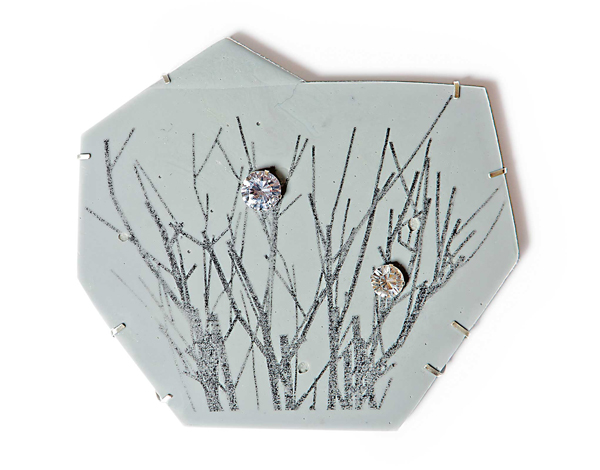
Georg Dobler: Nature is a great challenge. It can inspire you, it can alienate you, but no one can ever surpass it. When one observes nature—something grown out of itself—one can only go down on one’s knees in awe. One can never attain the effortless power of nature. What one can do, however, is to approximate it. We cannot really create new images and new forms. Everything stems from the already existing forms of nature. We are just a small part of a marvelous whole.
For many years now, you have made bugs, Georg. What is your attraction to them?
Georg Dobler: This concept developed when I began to question whether there is a limit to how beautiful art can actually be. After the materials had transmuted into the mainstream through the “arte povera” trend in other artists’ work, I reconsidered the concept of avant-garde for myself and consciously used beautiful things in my jewelry. A visit to the Gulbalkian Museum in Lisbon validated this rethinking, and I was completely convinced after seeing Rene Lalique’s jewelry there. My book recommendation in connection with this question is The Trouble with Beauty by Wendy Steiner.
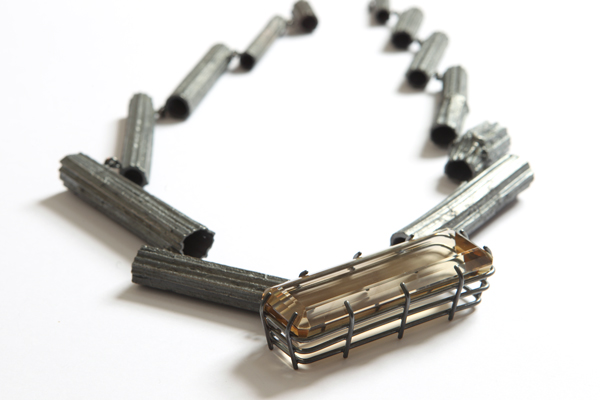
Georg Dobler: Stones were very much looked down upon in the avant-garde jewelry movement of the 1990s. By using large stones—particularly amethysts, which served as a synonym for “old ladies jewelry”—I violated the taboo of the times. As a conceptual foundation, I used the methods of Pop Art, alienating objects by enlarging them in order to induce a sense of bewilderment. And it works!
Margit, you seem to use very cheap materials, such as cardboard and epoxy in your jewelry. Is there a particular reason for this?
Margit Jäschke: I do not see myself as a goldsmith, but rather as a visual artist. I actually work in both domains. I do not want my work to attain value due to the material used, but due to it being a work of art. It is for this reason that I picked the title PRECIOUS for my recently published book. The precious quality refers not to the material but to the work in its own right.
Who do you admire as an artist, Margit?
Margit Jäschke: I admire William Kentridge, and I really love the pictures and movies by Julian Schnabel. I admire the work of Kiki Smith, the pictures, photos, and objects by Cy Twombly, and Antoni Tapies. I have been very impressed by the work of Felix Gonzalez-Torres.
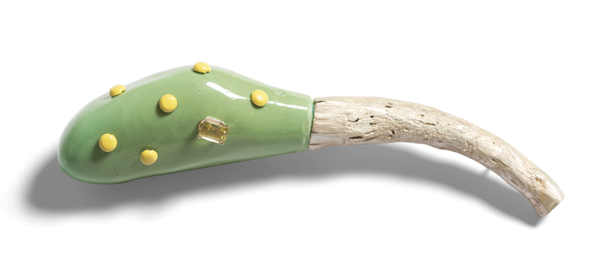
Georg Dobler: We recently saw an exhibition of the British painter Lucian Freud in Vienna, and although neither of us considers him our artist of choice, his work made us feel a great degree of depth and truthfulness. We were very impressed.
The current movie Grand Budapest Hotel by Wes Anderson also found our great appreciation—a visual masterpiece whose beauty and the incredible ingenuity amazed us quite a bit.
Margit Jäschke: I once read Feuerkopf (“Hothead”), a biography of Andre Heller, an Austrian artist, writer, director, singer, and set designer. It was wonderful. I would also strongly recommend Haruki Murakami’s 1Q84, parts 1–3. I can hardly wait for part 4!
Thank you.
